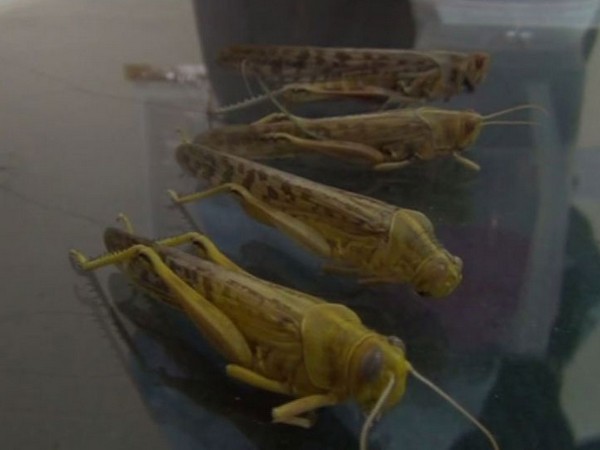Barmer: Indian and Pakistani officials have held a discussion over an outbreak of locusts, believed to be the worst since 1993, and possible joint action to tackle it.
The officials, including scientists, met on Wednesday at the border village of Munabao for more than four hours and deliberated on the issue of joint action to deal with the menace, according to Indian officials.
They said an alert has been issued in all districts adjacent to the Pakistan border and surveys are being conducted to tackle the situation.
After sightings of locusts in villages around Jaisalmer near the border with Pakistan late last month, the Jodhpur-headquartered Locust Warning Organisation (LWO) had started gearing up to tackle any major attack by the tropical grasshopper.
Locust attacks were reported in the region after a gap of 26 years, according to LWO officials.
“Locusts have been seen in Jaisalmer. These have come from Pakistan and may spread to places such as Barmer, Jaisalmer, Phalodi, Bikaner, and Suratgarh. We have used ‘malathion’ (a chemical pesticide) and are ready with all the required equipment to tackle the locusts. Our teams have reached all the circles,” LWO official Mahesh Chandra had told ANI here last month.
Chandra had said that locusts are generally seen during the months of June and July as the insects are active from summer to the rainy season.
The last major locust outbreak was reported in Rajasthan in 1993.
According to the UN Food and Agriculture Organisation, “The longer-term outlook suggests that there is a moderate risk of a few swarms migrating after mid-June from the spring breeding areas to the summer breeding areas along both sides of the Indo-Pakistan border.”
The FAO had raised alarm over the locust outbreak in northeast Africa and Saudi Arabia in February, saying that heavy rains and cyclones boosted locust breeding since October last.
It had said in May that breeding had intensified in Iran and Saudi Arabia, and occurred on a smaller scale in southwest Pakistan.
In its update posted yesterday, the FAO said, “In India, ground control operations are in progress against first to third instar hoppers and groups in Jaisalmer district of Rajasthan.”
It said teams treated 1,707 ha between June 1 and 15. “More hatching and the formation of hopper groups are expected in the coming weeks in Rajasthan, which may be supplemented by groups of adults and perhaps a few small swarms arriving from spring breeding areas,” it added.
Adult locust swarms can fly up to 150 km in a day with the wind and adult insects can consume roughly their own weight in fresh food per day. A very small swarm eats as much in one day as about 35,000 people, posing a devastating threat to crops and food security.
[source_without_link]ANI[/source_without_link]

